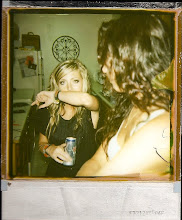1. Despite its use of improvisation, how is Gummo different from “execution dependent” screenplays such as Stranger than Paradise?
--It plays out well in the screenplay and on the screen, which execution dependent films do not play out well in the screenplay. Gummo "relies heavily on the screenplay."
2. According to Murphy, what function does the “nonsense” included in the dialogue serve in the film as a whole?
--It creates a sense of realism, a sort of "slice of life", things that people would actually say. While also "creating collage of different bits of information, thus establishing weird juxtapositions." (To tell you the truth, I'd kind of like to have this explained a little better. I'm not sure to exactly what Murphy is getting at?)
3. What specific connections does Murphy make between Gummo and New American Cinema (including Beat films)? How did Korine respond to associations made between his work and underground film?
He connects the nonlinear story and lack of plot to the New American Cinema, specifically Jonas Mekas' pursuit of the plotless cinema that would be the only way to the "rebirth" of American cinema. Korine argues that he is entirely a commercial filmmaker. He denies that an alternative cinema such as underground exists. He claims that he makes Harmony cinema, which is "a cinema of obsession and passion." Yet Murphy argues that his filmmaking style has kept his films from becoming successful in mainstream audiences, despite that they have been financed by major studios.
4. Besides as a filmmaker, how has Korine participated in alternative urban youth culture?
--"he's written a novel, produced fanzines, and done installations in major art galleries." He has contributed to an alternative urban youth culture in the form of art, which has been named "Modern Gothic" which is from artists who are obsessed with death and such.
5. If Gummo uses “collage techniques” instead of a traditional plot, what techniques are used on the image and soundtrack to make connections and associations across the course of the film? How are these techniques similar or different than the “narrational tactics” described by Bordwell? (Look at your Week Nine response, TWHTI, “Tightening the Plot,” starting on p. 43.)
--It doesnt follow the narrational tactics claimed in Bordwell because the continuity is thrown off by the constant change in format (photographs, home-movie, etc); It also does not connect scenes in the same continuous manner, through causal or temporal rationality. The soundtrack goes along with the images in the way that it is a sampling of many different formats, such as different genres of music, the reading of suicide notes, etc. (But I'm still not quite sure how the connections are made, other than the connections and allusions to things outside of the film?)
Subscribe to:
Post Comments (Atom)

1 comment:
Good.
#2: Ultimately the nonsense often starts chains of free association that helps give structure to the film overall. I'll try to touch on this in the final class discussion.
#5: Dangling causes, varieties of motifs that we discussed, etc.
Post a Comment